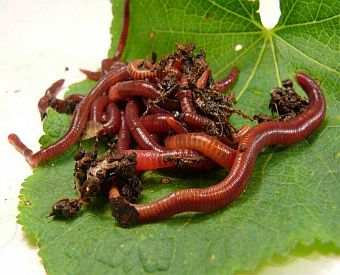8 Simple Techniques For Red Wiggler Express
8 Simple Techniques For Red Wiggler Express
Blog Article
The Facts About Red Wiggler Express Revealed
Table of ContentsThe Buzz on Red Wiggler Express4 Easy Facts About Red Wiggler Express DescribedSome Known Details About Red Wiggler Express The Definitive Guide for Red Wiggler ExpressEverything about Red Wiggler Express
Some worm farmers actually keep food and water to simulate drought problems and bump up cocoon production. We don't advise this for the home composter as it has the potential to eliminate off too numerous of your finest worms. Since you recognize all regarding the red worm it's time to head out and find a great distributor and obtain a pound or 2 and start your own worm farm.We'll speak regarding exactly how to keep red wigglers and why they must be the best worm for most composters. Fun reality: The "fetid" component of the binomial name refers to what some say is a reeky secretion the red wiggler utilizes to fend off predators. The anatomy of a red wiggler resembles that of other common earthworms; a long-segmented body starts at the pointed head and terminates at a slightly-flatted tail.
The Greatest Guide To Red Wiggler Express
The digestive system tract is easy, starting at the mouth where the worm starts to consume its food before passing it on to the throat. The vocal cords is a muscular area which acts like a pump to pull food right into the mouth before pumping it out into the esophagus. The esophagus is narrow and thin-walled and works as the "waiting space" for the gizzard.
Keep in mind: This need for grinding is why grit is recommended in a worm container. The worm features no native grinding capability so the worm depends on ingested grit to assist grind its food in the gizzard. The belly is where the initial chemical break down of food happens with the aid of a protein-busting enzyme.

Within 42 days, these baby worms will get to sex-related maturation as shown by the appearance of the clitellum. A fully grown red wiggler can be anticipated to live between one to three years. The magnificent red wiggler may often be utilized as a bait worm for smaller fish or as a healthy protein resource for hens and reptiles.
The Basic Principles Of Red Wiggler Express
And as stated above, they are the most usual composting worm in the world. Yet why? Well there's most likely not just one factor. Rather, a mix of cost, strength, and comfort in a vast variety of temperature levels makes it the most appropriate composting worm for the majority of new vermicomposters. Red wigglers and their cocoons can survive in a variety of problems.
This is a typical technique among worm carriers who don't intend to run the risk of having the worms being in a warm or chilly warehouse over the weekend. Worm farmers are not saving worms in a circumstance where they are all set to ship. The worms need to be collected from their habitat first, so farmers will certainly frequently establish a Friday or Saturday deadline in order to harvest in time for a Monday shipment.
To save on shipping expense, you might want to see if there are any type of neighboring "Mama and Pop" stores through a Google search (Red Wiggler Express).
I call these the "Big 3" aspects of worm container maintenance. If you keep all 3 within proper arrays, after that there's not * that * a lot that can go wrong with your bin. As mentioned earlier, red wigglers have a broad temperature level resistance. For finest outcomes, keep a temperature of 55F-90F. Short departures out of that temperature level variety are great.
The Main Principles Of Red Wiggler Express

For best results, you want to shoot for regarding 60-70% wetness level. At the best wetness levels which is just under 70% that handful must barely produce one decline of fluid.


The European Nightcrawler, the bigger relative of the red wiggler, is equally as starved and also produces a great bait worm. But it prefers a little a cooler atmosphere than the red wiggler. The African Nightcrawler is a really big composting worm and makes a stunning, granular cast.
The Indian Blue is starved, but also prefers a warmer environment and it likewise exhibits a propensity to run away the container. The red wiggler is a hardy worm and isn't as fussy regarding its climate. I such as to call it the Ford Taurus of vermicomposting worms; you won't boast to your hardcore composting friends that you own them, yet they will offer you well.
See This Report on Red Wiggler Express
Guaranteed alive 1/2 pound of hand arranged Red Wigglers/Compost with worms (+500 worms) in different stages of life from cocoons to grow worms in their natural environment/bedding. Hand arranged worms minimized the disturbance of the worms thus guaranteeing online distribution. Red wiggler worms do not like vibrations or light.
Report this page